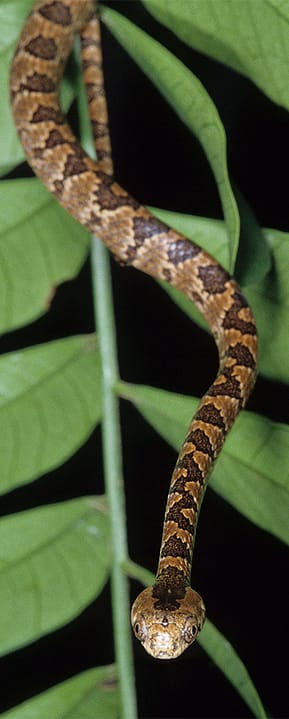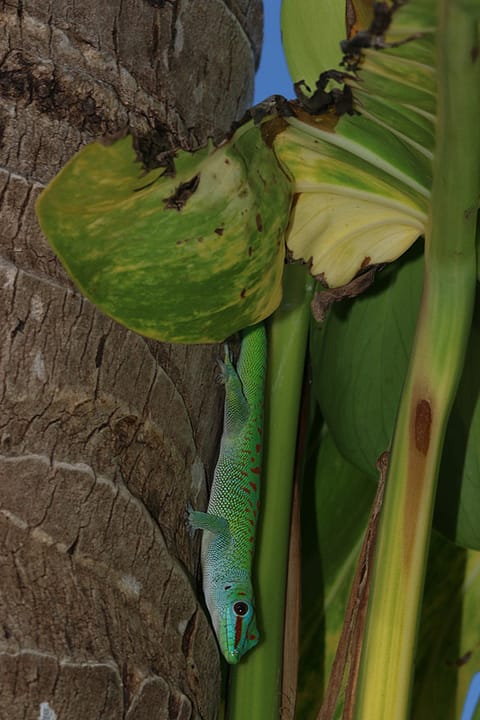An international research team lead by Das (2023) have reconstruct the evolutionary tree of a major group of snakes, the Elapoidea. They did it with the help of one of the largest genomic datasets, cutting-edge algorithms and software. Their results change the evolutionary tree of Elapoidea, a living superfamily of ecologically hyperdiverse snakes, distributed around the globe.
The team generated a gigantic genomic dataset of nearly 4600 genes – as a comparison, most datasets used for DNA taxonomy of animals are less than 10 genes! Researchers did it for members of every known elapoid family and subfamily. They used nano- and micro-computed tomographic scans for several elapoid species.
The research revealed an entirely new family within the Elapoidea superfamily. Snakes of this superfamily evolved in the early Cenozoic era (the Eocene), about 50 to 45 million years ago. Elapoidea has some 700 species divided into several families.
Some of the most toxic venom is produced by these snakes that include the cobras and mambas, but also harmless and novel snakes such as the Africa shovel-nose snakes and the venomous burrowing asps that can bite without opening their mouth. While biologists discover new species and genera quite often, discovering an entire family is extremely rare for vertebrates, and such discoveries occur a few times in a century. This new family has two genera and four or five species. The new family is found in the Levant region, eastern and northeastern Africa.
“Snakes are not just diverse, but they are very important ecologically. The venomous snakes are important medically as well. What would happen if the knowledge on the evolution and classification of such an important group were in tatters?”, Sunandan Das explained.
“Everything would then get seriously impeded: From communication among scientists to research, into the evolution of venom, venom delivery systems etc., from understanding the tempo and mode of the evolution of a big chunk of the global snake diversity to popular scientific work on such group. Until now, this has exactly been the case with elapoid snakes – they are a textbook example of ‘ancient, rapid radiation’ and as such, a tough nut to crack, Sunandan Das concludes.
The abstract. The superfamily Elapoidea is considered to be a classic example of ancient, rapid radiation. Such radiations are challenging to fully resolve phylogenetically, with the highly diverse Elapoidea a case in point. Previous attempts at inferring a phylogeny of elapoids produced highly incongruent estimates of their evolutionary relationships, often with very low statistical support. We sought to resolve this situation by sequencing over 4,500 ultraconserved element loci from multiple representatives of every elapoid family/subfamily level taxon and inferring their phylogenetic relationships with multiple methods. Concatenation and multispecies coalescent based species trees yielded largely congruent and well-supported topologies. Hypotheses of a hard polytomy were not retained for any deep branches. Our phylogenies recovered Cyclocoridae and Elapidae as diverging early within Elapoidea. The Afro-Malagasy radiation of elapoid snakes, classified as multiple subfamilies of an inclusive Lamprophiidae by some earlier authors, was found to be monophyletic in all analyses. The genus Micrelaps was consistently recovered as sister to Lamprophiidae. We establish a new family, Micrelapidae fam. nov., for Micrelaps and assign Brachyophis to this family based on cranial osteological synapomorphy. We estimate that Elapoidea originated in the early Eocene and rapidly diversified into all the major lineages during this epoch. Ecological opportunities presented by the post-Cretaceous-Paleogene mass extinction event may have promoted the explosive radiation of elapoid snakes.
Citation
Das S, Greenbaum E, Meiri S, Bauer AM, Burbrink FT, Raxworthy CJ, Weinell JL, Brown RM, Brecko J, Pauwels OS, Rabibisoa N. 2023. Ultraconserved elements-based phylogenomic systematics of the snake superfamily Elapoidea, with the description of a new Afro-Asian family. Molecular Phylogenetics and Evolution 2023 Jan 2:107700.










